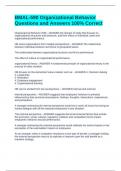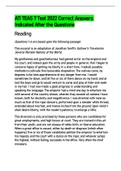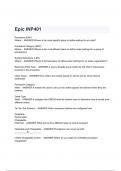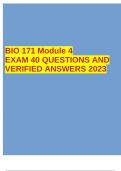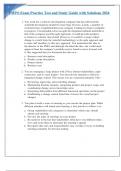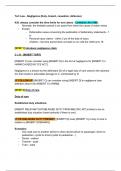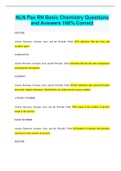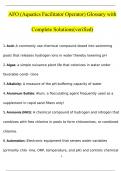Exam (elaborations)
BMAL-590 Organizational Behavior Questions and Answers 100% Correct
- Course
- Institution
BMAL-590 Organizational Behavior Questions and Answers 100% CorrectBMAL-590 Organizational Behavior Questions and Answers 100% CorrectBMAL-590 Organizational Behavior Questions and Answers 100% Correct Organizational Behavior (OB) - ANSWER-the domain of study that focuses on organizational struc...
[Show more]
